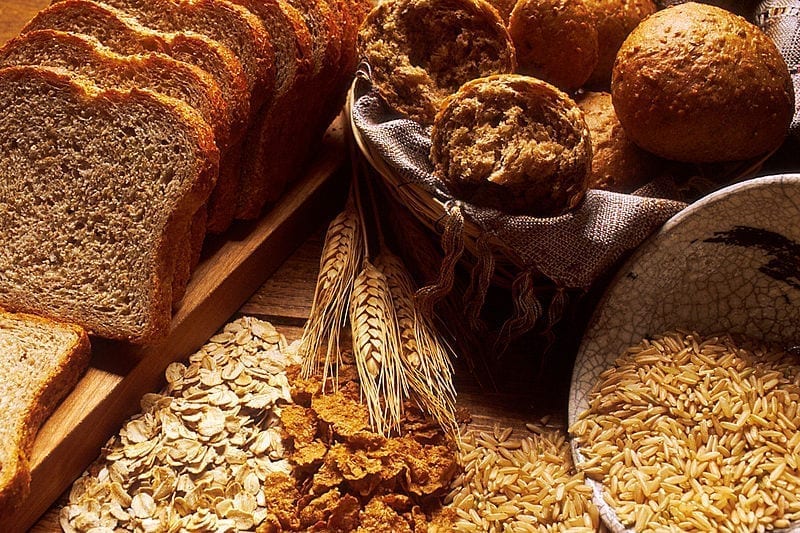A 2004 study shows that our food supply has become less nutritious over time. Why? There are a number of ideas, from breeding to soil to atmospheric carbon.
The food we eat nowadays isn’t nearly as nourishing as it used to be. Scientists have been aware of this for a while now, and several hypotheses have been put forth in an attempt to explain why our food is becoming less nutritious.
As early as 2001, studies were showing that levels of important nutrients were dropping in common foods. A 2005 article from The Guardian talked about the shifting ratio of fat to protein in British chicken, explaining that contemporary chicken had twice as much fat as a chicken from 1940, with a third more calories and a third less protein. During the same time frame, vegetables also became noticeably less nutritious. Between 1940 and 1991, potatoes lost 47% of their copper, 45% of their iron, and 35% of their calcium content. Broccoli lost 80% of its copper, while both broccoli and tomatoes only contained a quarter of the calcium they delivered in 1940. One idea put forth at the time was that growing food hydroponically instead of in soil, as well as using chemical fertilizer, knocked the nutrients out of these common foods. However, the debate was seen as moot: people weren’t getting sick, so why worry?
In 2004, more people were becoming hip to the decline in important nutrients like protein, calcium, phosphorous, iron, and vitamins B12 and C in a wide variety of vegetables and fruits between 1950 and 1999. Researchers came up with more potential reasons why our food was less nutritious. Improvements in vegetable and fruit breeding had resulted in larger and more prolific fruits and vegetables. Perhaps that size increase didn’t mean an increase in nutrient content as well. Anyone who has eaten a wild strawberry, for example, knows that the tiny fruits pack incredible flavor, while a farmed strawberry may be several times larger with diluted flavor. It may be that nutrients, like strawberry flavor, are constant, and larger fruits and vegetables are simply more full of fiber and water. One alternative is to look for food with deeper colors or wild alternatives, such as foraged greens instead of lettuce or spinach.
Looking at changes in our soil could also explain a bit about why our food is less nutritious than it used to be. A plant can only be as nutritious as the soil which feeds it. Every harvest pulls more trace minerals out of the soil and deposits them on our plates, but many industrial fertilizers replace only the three major macronutrients: nitrogen, phosphorous, and potassium. It’s a lot like feeding people only protein, fat, and carbohydrates, without supplying any vitamins or minerals. In order to put the nutrients back in our food, we have to put them back in the soil. Instead, we mostly flush them out to sea.
Recently, though, a mathematician interested in biology may have come up with another factor implicated in diminishing nutritional content: atmospheric carbon, the same thing that’s driving climate change. In 1998, Irakli Loladze learned about a mystery involving zooplankton, those wee sea beasties that eat algae and form the basis of the ocean’s food chain. Researchers at Arizona State University exposed the algae that their zooplankton ate to more light, which, being plant food, made more algae. For a while, the plankton ate like miniature kings, but eventually, surrounded by food, they started to decline. How could that be?
Loladze realized that the increased light was beefing up the algae by increasing its sugar content, but rendering it less nutritious overall. Like any good thinker, he considered the implications of his discovery as they affect the bigger picture. While agricultural crops haven’t been exposed to more sunlight since our great-grandparents’ time, they certainly have had to contend with increased atmospheric carbon. Plants absorbed the carbon, increasing their carbohydrate (sugar) content, but have not taken up micronutrients from the soil to compensate for the size and sugar increase, perhaps because our played-out soil isn’t chock full of goodness any more.

In order to rule out plant breeding as the sole cause of the nutritional decline, Lewis Ziska at the USDA looked instead at a plant that hasn’t been “improved” by people: goldenrod. An important source of nectar and pollen for bees getting ready for winter, goldenrod hasn’t changed much since the Smithsonian started collecting samples of it in 1842. What Ziska found is that even goldenrod pollen has become less nutritious since the Industrial Revolution, losing a third of the protein content in its pollen.
While Lamar Smith (R-TX), chair of the House Committee on Science, has argued that increasing atmospheric carbon would be a net benefit for humanity because it would increase plant growth, reality is more complex than this simple observation justifies. As a nation, we’re becoming fatter and sicker, while those in developing countries are pushed to the margins. While processed food may well have a lot to do with this outcome, having even the “good stuff” turn up less nutritious isn’t helping. Claims that we need to bloat the food supply to feed everyone ring hollow when we waste half the food that we grow. What good is twice the supply if it contains a fraction of the nutrients we need from our food?
Related: The Future of Agriculture


Join the conversation!